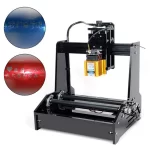How to Reduce the Radiation Damage of Laser Cutting Machine
Laser cutting machines are widely used in various industries for their high precision and efficiency. However, one of the major concerns associated with laser cutting is the potential radiation damage it may cause to both operators and the environment. In this article, we will explore some effective measures to reduce the radiation damage of laser cutting machines.
1. Proper Ventilation and Exhaust System
Adequate ventilation is crucial for minimizing the concentration of harmful fumes and particles generated during the laser cutting process. The installation of an efficient exhaust system is essential to remove these contaminants from the working area and ensure a safe working environment. It is important to regularly check and maintain the ventilation system to ensure its proper functioning.
In addition to the ventilation system, using filters and purifiers can help further reduce the release of harmful substances into the air. Activated carbon filters, for example, can effectively absorb and neutralize toxic gases and volatile organic compounds (VOCs). Regularly replacing and properly disposing of these filters is important to maintain their effectiveness.
2. Personal Protective Equipment (PPE)
Providing operators with appropriate personal protective equipment (PPE) is crucial to minimize the risk of radiation exposure. PPE should include safety goggles or glasses that provide sufficient protection against laser radiation. The goggles should have the proper optical density for the specific laser wavelength being used.
Moreover, operators should wear protective clothing, such as gloves and lab coats, to shield themselves from flying debris and splatters of molten material. It is essential to regularly inspect and replace damaged or worn-out PPE to ensure maximum protection.
3. Training and Safety Measures
Proper training and education are key factors in reducing radiation damage from laser cutting machines. Operators should receive comprehensive training on the safe operation of laser cutting equipment, including the potential risks and necessary safety measures.
Implementing safety protocols, such as restricted access to the laser cutting area and proper signage indicating potential hazards, can further enhance workplace safety. Regular safety inspections and maintenance checks should be performed to identify any potential issues and ensure the machine is functioning properly.
4. Monitoring and Control
Regular monitoring and control of the laser cutting machine’s parameters are essential for minimizing radiation damage. It is important to regularly calibrate and align the laser beam to ensure its accuracy and prevent unintended exposure.
Implementing interlocks and safety sensors can help automatically shut down the machine when any abnormalities or malfunctions are detected. Additionally, monitoring the power levels, pulse duration, and repetition rates can help control the intensity of the laser and minimize radiation risks.
5. Regular Maintenance and Servicing
Regular maintenance and servicing are essential for ensuring the optimal performance of the laser cutting machine and reducing the risk of radiation damage. Regularly inspecting and cleaning the machine, as well as replacing worn-out parts, can help prevent malfunctions and maintain its efficiency.
Furthermore, scheduling regular professional servicing and calibration with trained technicians can help identify and address any potential issues before they become serious problems. Following the manufacturer’s guidelines and recommendations for maintenance and servicing is crucial to ensure the longevity and safe operation of the laser cutting machine.
In conclusion, reducing the radiation damage of laser cutting machines requires a comprehensive approach that includes proper ventilation, personal protective equipment, training, monitoring and control, and regular maintenance. By implementing these measures, operators can significantly minimize radiation exposure and create a safer working environment.
.webp)
